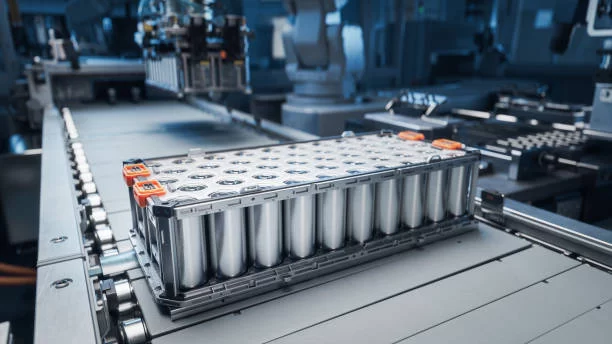Industrial Storage Containers in Energy Storage: Applications and Safety Enhancement
In the rapidly evolving landscape of energy storage, industrial storage containers have emerged as a crucial component, offering a wide range of applications and posing specific safety considerations.

The application scenarios of industrial storage containers in the energy storage domain are diverse and significant. One prominent area is the integration of renewable energy sources. Solar power plants, for instance, rely on these containers to store the surplus electricity generated during the day for use at night or on cloudy days. Wind farms also benefit from them by storing the excess energy produced during strong wind periods and releasing it when the wind speed drops. This helps to smooth out the intermittent nature of renewable energy generation and improve the overall reliability of the power supply.
Grid peak shaving is another essential application. Industrial containers play a vital role in buffering the power grid by storing energy during off-peak hours and discharging it during peak demand. This helps to balance the load on the grid, reducing stress and enhancing its stability. They are also crucial in responding to sudden surges in electricity demand, providing a rapid source of power to meet these spikes.
In the context of distributed energy systems, such as those in factories, commercial buildings, or communities, these containers enable the storage of locally generated energy, facilitating self-sufficiency and optimal utilization. When combined with microgrids, they ensure a continuous power supply even in the event of a main grid failure.
Remote areas, often lacking a reliable or extensive power grid, depend on industrial storage containers to store energy from renewable sources or other means. This is particularly important for providing electricity to isolated communities, military bases, and research stations.
The growing field of electric vehicle charging infrastructure also benefits from these containers. They can act as an energy buffer for fast-charging stations, enabling them to store electricity during off-peak times and supply it during peak charging periods. Additionally, in large parking facilities with charging points, storage containers help to manage the variable charging demands throughout the day.
In industrial production processes, where intermittent high energy consumption occurs, these containers can store electricity in advance to provide a stable power supply when needed, such as in the steel and chemical industries.
However, with the wide range of applications comes the need to address safety concerns. To enhance the safety of industrial storage containers in energy storage, several measures can be taken. The selection of appropriate materials is paramount. High-strength and corrosion-resistant materials, such as quality stainless steel or specialized alloys, should be used to construct the containers to withstand physical and chemical stresses. Materials with excellent insulation properties are also necessary to prevent electrical leakage and short circuits.
The structural design of the containers needs to be robust to withstand external forces and internal pressures. A well-engineered shape and construction can enhance the container’s ability to resist impacts and ensure a tight seal to prevent leaks.
Effective thermal management systems are crucial. Installing efficient cooling mechanisms, such as heat sinks, fans, or liquid cooling systems, along with precise temperature sensors, helps regulate the temperature and prevent overheating, which can pose significant safety risks.
Fire and explosion prevention measures are essential. Incorporating fire-resistant insulation layers and installing pressure relief valves and explosion-proof devices within and around the containers can contain potential fires and explosions and safeguard the surrounding environment.
Sophisticated monitoring and early warning systems should be integrated. A network of advanced sensors should be deployed to continuously monitor critical parameters like pressure, temperature, current, and voltage. Intelligent data analytics can then be used to predict and alert for any potential safety hazards in a timely manner.
Regular maintenance and inspection are indispensable. A strict schedule should be established for checking the container’s physical condition, including its appearance, seal integrity, and the tightness of connections. Non-destructive testing techniques, such as ultrasonic and radiographic inspections, can be employed to detect any internal flaws or damages.
Adhering to strict safety standards and regulations is non-negotiable. Both the design and operation of the containers must comply with national and industry norms. Moreover, comprehensive training should be provided to operators to ensure they are well-versed in safety protocols and emergency response procedures.
In conclusion, industrial storage containers have become indispensable in the energy storage sector, with numerous application scenarios that contribute to a more efficient and reliable energy supply. However, ensuring their safety requires a multi-faceted approach encompassing material selection, design optimization, thermal management, safety measures, monitoring systems, maintenance, and regulatory compliance. By addressing these aspects, we can fully leverage the potential of industrial storage containers while minimizing the associated risks.
